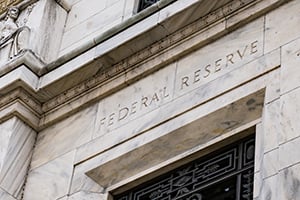 So, what will the Fed do at its latest meeting? The short version is that almost everyone thinks it will raise rates by 75 bps (or 3/4 of a percent). Almost, in this case, means that a minority of people think the Fed will raise rates by more, like a full percentage point. The takeaway is that everyone does expect rates to go up—and by an amount that, prior to the past couple of months, would have been shockingly large.
So, what will the Fed do at its latest meeting? The short version is that almost everyone thinks it will raise rates by 75 bps (or 3/4 of a percent). Almost, in this case, means that a minority of people think the Fed will raise rates by more, like a full percentage point. The takeaway is that everyone does expect rates to go up—and by an amount that, prior to the past couple of months, would have been shockingly large.
The rate increase itself is fully incorporated into markets. Don’t expect much, if any, reaction from a 75-point decision. If we get a 100-point decision? That might generate some market reaction. But the reaction is as likely to be positive as negative, as markets conclude that the Fed getting preemptive about inflation is a good thing, in the long run.
Short version: the Fed raises rates as expected, and the markets yawn.
Where Things Get Interesting . . .
Where things get interesting is in the follow-up comments, where the market tries to parse what this means for the Fed’s policy decisions through the rest of the year. Current betting is on another 75 bp hike at the next meeting, then a slowdown to 50 bps each, with the target rate topping out at around 4 percent to 4.5 percent. If that is what the comments suggest, again no real market reaction. The real action will be in the details, especially around what the market expects versus what the Fed says.
With inflation much higher than expected in the last report, especially in areas such as housing, the market expects continued hawkishness. But the fact of the matter is that there are signs that inflation may be peaking, as higher-frequency housing data is softening. The real question for this Fed meeting is whether it notices—and chooses to acknowledge—those trends. If so, that would likely be interpreted as a surprise on the dovish side in its comments. And that would rattle expectations.
Bets on the Hawks
Mind you, the betting is still on hawkishness. Growth continues, job growth is healthy, spending is still reasonably strong, and that recession that everyone expected has not shown up yet. While the Fed’s higher rates policy is working, as demand slows down, a soft landing is still a real possibility. Given that, and with the current inflation numbers, expect the Fed to hit the bid on the expected 75 bps this meeting. That is a lock, and the hawks are certainly in the lead going forward as well.
But the expectations for the next meeting are softer and more vulnerable to interpretation, so the Fed’s comments will be important. Something as simple as re-emphasizing the “data dependence” of its decision-making process is a reminder that data can change, and that implicitly calls into question the most hawkish outcomes.
And that is what I expect: a strong 75 bps for this meeting, but a softer emphasis on data dependence for coming meetings. While this will still remain, objectively, a hawkish stance, it will likely be interpreted as more dovish compared to current expectations, which could be good for markets.
The other thing to look for will be any hints toward where rates are expected to top out. This will be another good guide to how, past this and the next meeting, the Fed sees the economy evolving. One of the main drivers of continued inflation is expectations, which can become a self-fulfilling prophecy. While there were signs that public inflation expectations over the next five years had started to rise, multiple surveys are showing they have now pulled back, reducing that risk, which is a key Fed worry. Overall, there are signs that the Fed’s policy has largely done what it intended—and that may temper its long-term rate increase expectations. That would, once again, be dovish compared to current market expectations.
Upside Ahead?
That will be the real thing to analyze from this meeting. Not the 75 bp increase, but where market expectations are compared to what the Fed is saying. Expectations are very hawkish, and the Fed can come out just as expected and still be more dovish than expected. That likely limits the market downside from this meeting and just may provide some upside going forward.


 Print
Print

